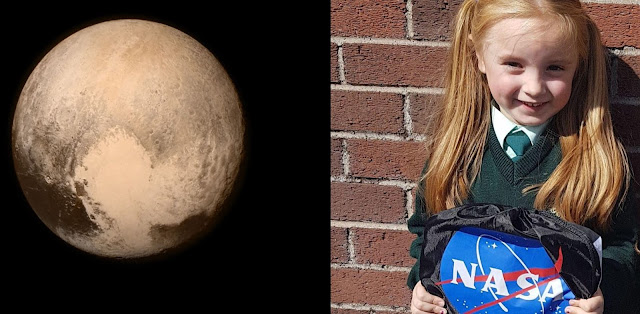A 6 year old girl, Cara Lucy O'Connor, has a concern. Pluto was one of the nine planets in the solar system, and since 2006 it isn't anymore. That’s not working with a little 6 year old girl. That’s not right says the little girl from Ireland. So Cara, with the assistance of her teacher, sent a letter to NASA wanting to convince the space agency to “make Pluto a planet again.” Cara wrote in the letter “I listened to a song and at the end of it the song said “Bring Pluto Back” — and I would really like that to happen,” She went on to clarify that in 2006, Pluto was demoted to the status of a dwarf planet, “a type of planet that isn't big enough to clear its orbit.” She spoke about the Kuiper belt, a doughnut-shaped ring beyond Neptune where many dwarf planets are situated. She wrote: “I really think Pluto should be a main planet again like Mercury, Venus, Earth, Mars, Jupiter, Saturn, Uranus & Neptune, because in one video I watched called 'Let's go meet the plan...


Comments
Post a Comment